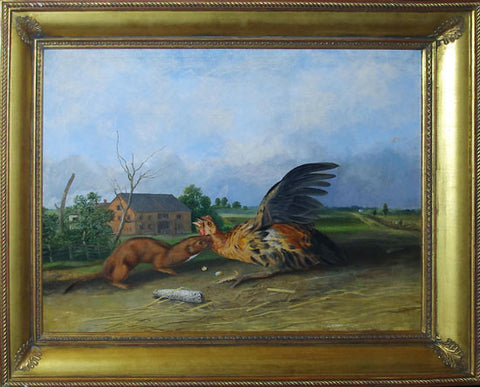
John Woodhouse Audubon (1812-1862), Tawny Weasel - Putorius Fuscus
John Woodhouse Audubon (1812-1862).
Tawny Weasel - Putorius Fuscus - New York: 1845-1848
Corresponds to plate CXLVIII in the The Viviparous Quadrupeds of North America
Published: New York 1845-1848
Oil on canvas
22 x 28 inches (canvas)
John Woodhouse Audubon, the son of renowned ornithologist and wildlife artist John James Audubon, devoted his entire career to continuing and supporting the work of his father. He assisted in the completion of original works and the execution and distribution of lithographs.
After the completion of the Double Elephant Bird Portfolio, John James and John Woodhouse embarked on a similar venture, The Quadrupeds of North America, which set out to document America's mammalian inhabitants. By the late 1830s, John James Audubon showed signs of mental illness and could no longer continue painting with much accuracy. John Woodhouse continued the series, eventually completing at least half of the work.
Because of the difficulty of safely studying wild animals, both Audubons often sketched caged or dead animals, causing some of their renderings to appear primitive and sinister. Artists also used explorers' written accounts of their wildlife experiences and observations on the frontier to aid in the completion of the wildlife paintings. Although John Woodhouse Audubon's artistic career has been overshadowed by his father's success, his contribution to early wildlife documentation is significant.
Audubon's work is recognized in many private collections and museums, including the National Gallery of Art, the National Portrait Gallery, the Metropolitan Museum of Art, the Brooklyn Museum of Art, the Mill Grove Audubon Wildlife Sanctuary, and the National Museum of Wildlife Art.
We Also Recommend


